Category: Rural Property & Business
Land and Property Professionals
We sell, rent, manage, survey, plan and advise...what can we do for you?
We sell, rent, manage, survey, plan and advise...what can we do for you?
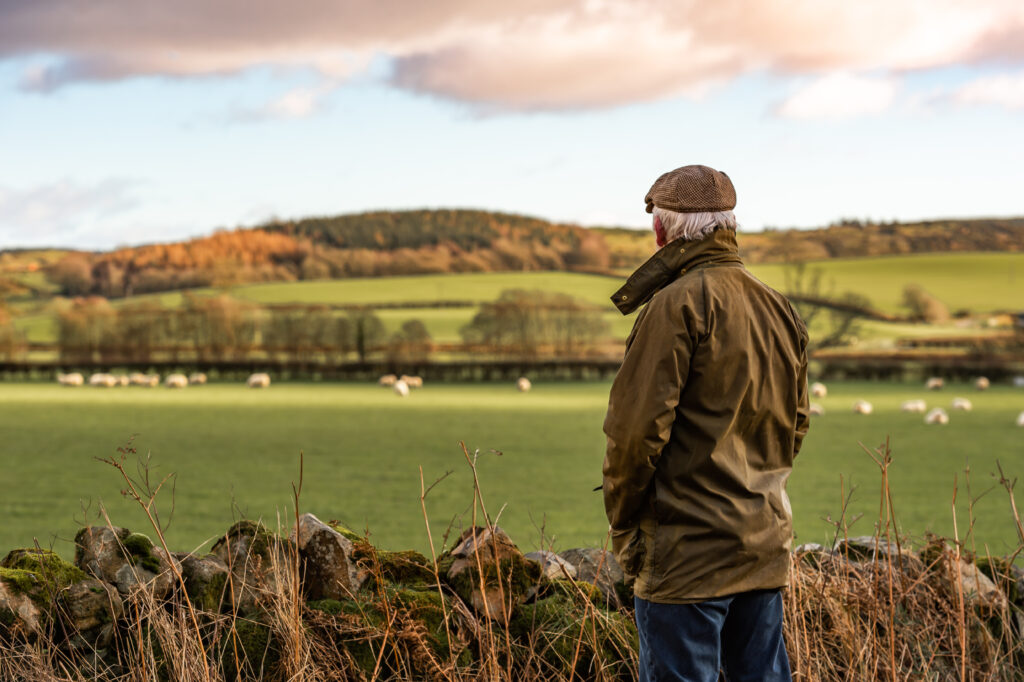
With the end of 2021 fast approaching, the Department for Environment, Food and Rural Affairs (Defra) have finally provided details of the Sustainable Farming Incentive (SFI) early rollout, due to occur in spring 2022. The proposed rollout, the first element of the Environmental Land Management Schemes, is a slimmed-down version of the Sustainable Farming Incentive Pilot, the agreements of which are currently being implemented.
The SFI early rollout (SFI 2022) has seen amendments to the initial concept of the scheme, with policymakers listening to applicants’ and experts’ thoughts on the practicalities of operation. The agreements will last 3 years, with payments made quarterly. There will be no minimum or maximum land areas and applicants will be able to choose the specific land parcels included in the agreement. There will also be an element of flexibility to amend the agreement every 12 months – such as including additional land areas.
As with the SFI Pilot, the SFI 2022 requires applicants to enter land parcels into ‘Standards’, being:
The first two Soil Standards will be the focus for most applicants. These Standards will only have introductory and intermediate levels to start with. As with the SFI Pilot, the payment received is reflective of the level of Standard that is entered into.
A summary of the requirements and the related payments, per hectare, are summarized below:
Arable and Horticultural Soils Standard
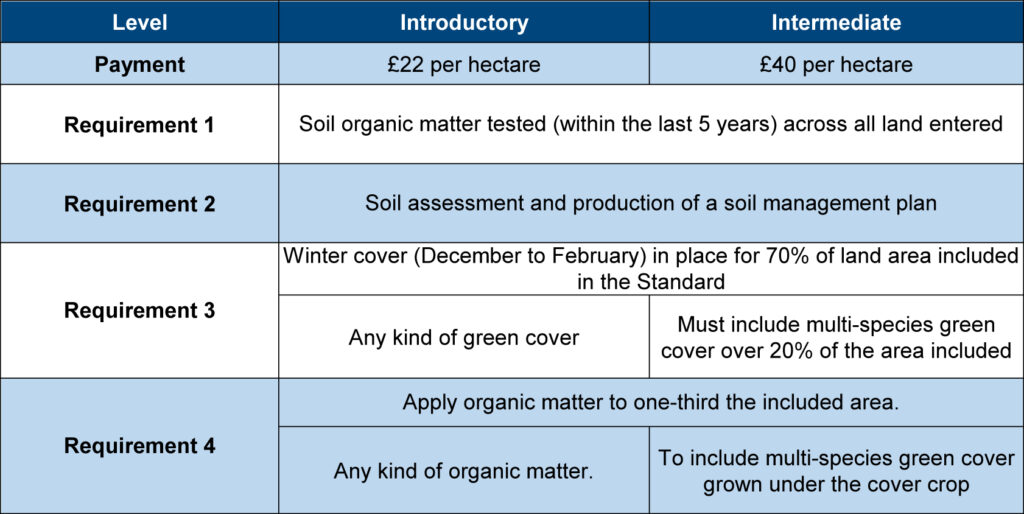
Grassland Soils Standard
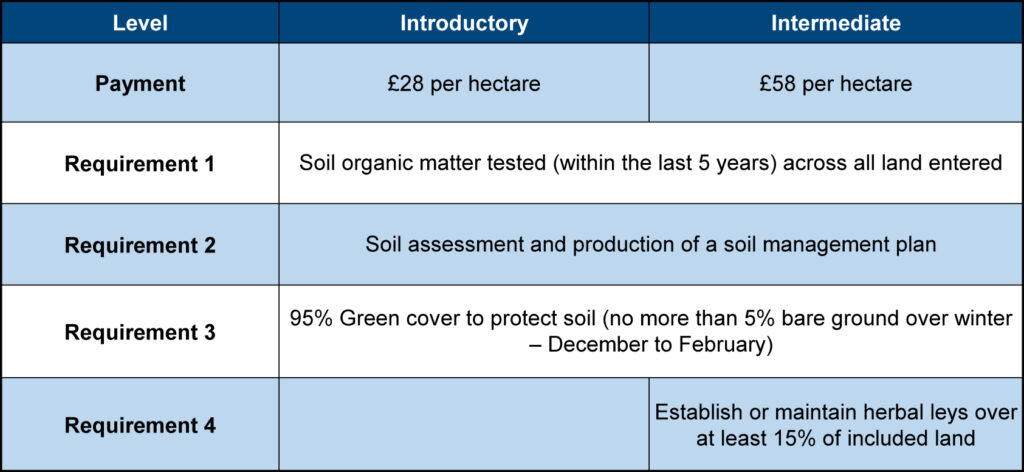
The advanced levels for both Standards are expected to be introduced from 2023. We have been told the Advanced Arable and Horticultural Soils Standard will focus on no-till and min-till farming.
Effort has been made to keep the Standards, and levels, as simple as possible to encourage implementation on the ground. However, there are specific nuances to several of the requirements, e.g. time requirements for the testing of soil organic matter. It is recommended that the full scheme is reviewed and considered in advance of the application window, which will be 10 weeks, opening in spring 2022.
The full scheme manual can be found at:
Sustainable Farming Incentive: how the scheme will work in 2022 – GOV.UK
If you would like more information or to discuss the options available, please contact a member of our Rural Team.
Land registry title plans represent the Land Registry’s interpretation of a conveyed boundary and as such they are the go to document to determine ownership. It is a requirement that all exchanges of land ownership are registered with the Land Registry.
Solicitors will carry out searches of the Land Registry and check carefully that boundaries match those registered so it is important that the maps are correct to avoid costs unravelling anomalies.
It is imperative that the plans prepared and being submitted for first registration, or for land being divided and transferred, are accurate and meet the minimum requirements of the Land Registry to avoid registration applications being rejected or delayed.
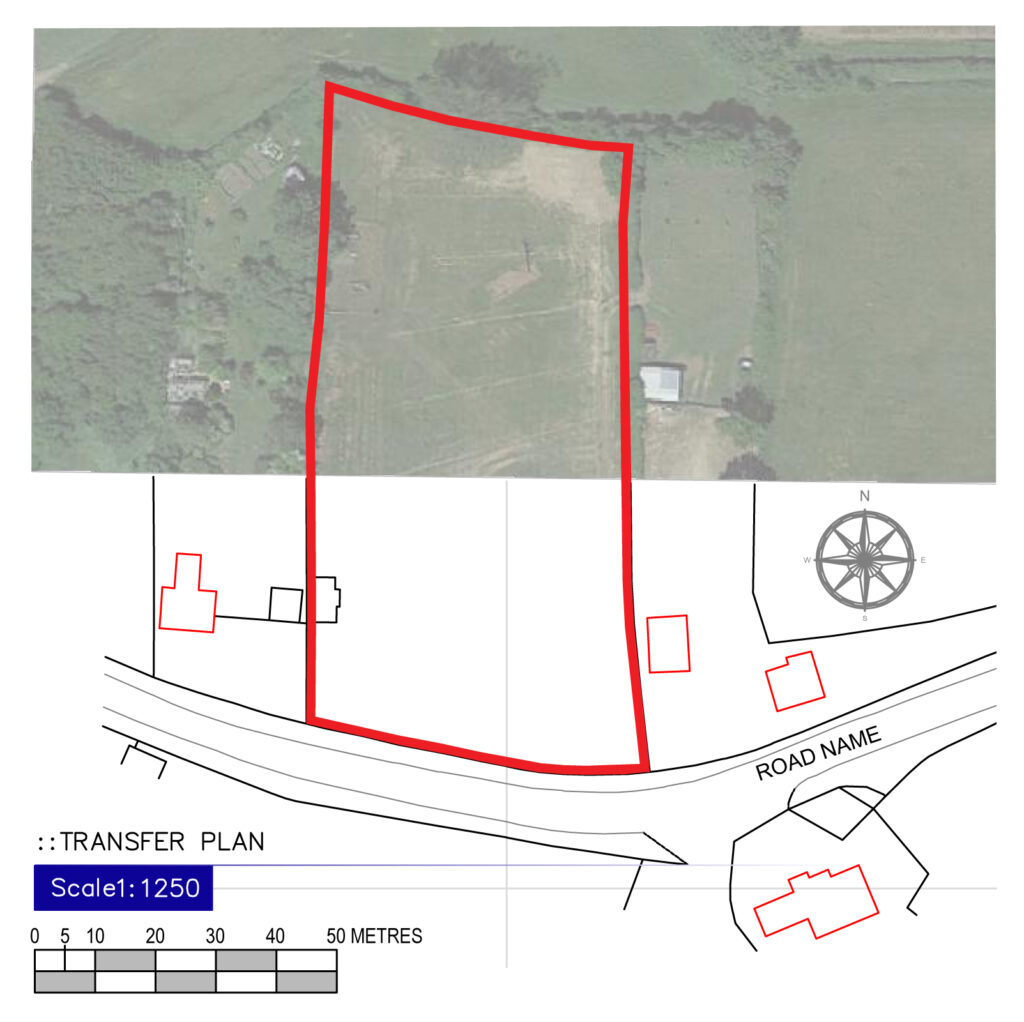
The Land Registry requires that plans submitted are of good quality and conform to their published guidance as follows:
Drawings prepared for leasehold have different requirements including the preparation of a detailed floor plan layout to a larger scale.
We prepare Land Registry complaint plans following the guidance published by the Land Registry. All plans are digitally produced from the latest Ordnance Survey data to enable accurate plans to be prepared and sent electronically to facilitate a speedy transfer of data between solicitors, sellers, buyers and the Land Registry.
We recommend that a site survey is conducted to take site dimensions for annotating on the drawings and to check that the Ordnance Survey data is up to date and correct. This often flags up errors within the tolerance of the Ordnance Survey Maps but which could otherwise cause conflict and/or ambiguity in future years (the Ordnance Survey data’s published accuracy is +/-1m).
If you need an accurate Land Registry map or if you have an anomaly on your historic Land Registry map then please contact David.
With the Government’s pledge to treble tree planting rates by the end of this Parliament, there is an increasing focus on schemes to support landowners to bring forward new areas for woodland planting.

England Woodland Creation Offer (EWCO)
The main scheme available in England is the Department of Environment, Farming and Rural Affairs’ (DEFRA) new scheme, EWCO, which opened for applications on 9th June 2021. The scheme is open to owner occupiers, tenants, landlords and licensors. To be accepted, land must meet the following criteria:

There are four types of payments being made available:
The scheme can be applied for at any time with funding decisions taking between 12 and 20 weeks.
Trees for Climate
An alternative, for those with land in the Marston Vale area of Bedfordshire, is Trees for Climate. The Forest of Marston Vale Trust has recently secured funding from DEFRA for a tree planting scheme which will provide landowners with an opportunity to create new woodland, assisted by a flexible funding package. The package is likely to be more generous than the EWCO scheme as it is specific to this Community Forest area.
Woodland Carbon Code
Applicants under either of the above schemes will have the ability to register the woodland with the Woodland Carbon Code. This is a quality assurance scheme for new woodland which generates independently verified carbon credit which can be sold.
If you would like more information on either the EWCO or Trees for Climate schemes, please contact Katie.
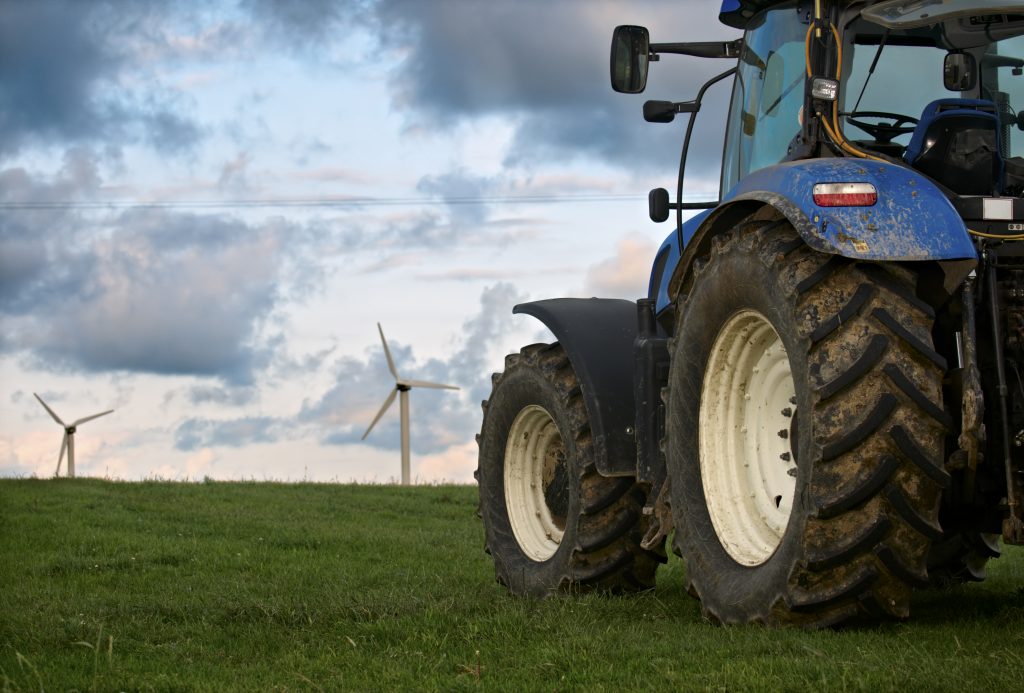
As we move towards the end of 2021, the loss of Basic Payment Scheme (BPS) payments is sadly no longer a future concern; it is very much here. It is a central consideration for budgeting and management decisions being taken now and as such it is more important than ever to ensure that all potential income sources are being utilised.
Going forward it is proposed that part of the BPS loss is to be filled by payments under the much-publicised Environmental Land Management Schemes (ELMS). ELMS are to be fully implemented by 2024 and, in anticipation of this, DEFRA is keen to introduce elements of the schemes now.
The Sustainable Farming Incentive
The Sustainable Farming Incentive (SFI) is one of three schemes within ELMS, providing payments at farm level. DEFRA sees this as a tool to allow farmers to have a different perspective over their land, focusing on natural assets and the best means to protect and enhance these. The SFI concentrates on improving biodiversity, tackling climate change and creating a greener landscape.
An initial SFI pilot is in the process of being rolled out, with the application window having closed at the end of September. The key role of this pilot is for participants to ‘test’ the scheme and its components and to be paid for their role within this. Applicants were limited to those receiving BPS payments and not currently in a stewardship scheme. The pilot is set to begin at the start of November 2021 and run for three years.
There are eight standards within the pilot, each subdivided into three ‘ambition’ levels. Payment rates have been set broadly equivalent to Countryside Stewardship, with the payments available reflecting the difference in work required for each level.
The table below provides a summary.
| Standard | Payment | ||
| Introductory | Intermediate | Advanced | |
| Arable and Horticultural Land | £28/ha | £54/ha | £74/ha |
| Arable and Horticultural Soils | £26/ha | £41/ha | £60/ha |
| Farm Woodland | £49/ha | – | – |
| Hedgerows | £16/100m | £21/100m | £24/100m |
| Improved Grassland | £27/ha | £62/ha | £97/ha |
| Improved Grassland Soils | £26/ha | £44/ha | £70/ha |
| Low and No Input Grassland | £22/ha | £89/ha | £110/ha |
| Water Body Buffering | £16/100m | £29/100m | £34/100m |
Alongside the pilot, a slimmed-down SFI is to be launched in the spring of 2022. This will be available to recipients of BPS and to be a more basic version of the options available within the pilot and the final ELMS (due in 2024).

This will focus on:
A full outline of payment rates is yet to be provided for the 2022 roll out, although they are expected to be similar to those in the 2021 pilot. It is expected that payments will be equivalent to a 30% uplift compared to similar Countryside Stewardship payments.
The SFI is being developed to allow greater flexibility and choice for the farmer and manager. We have been promised a move away from ‘penalisation’ of mistakes and errors and an openness to moulding the scheme to the individual holding. There will be the potential to add and remove parcels from standards and the ability to choose different levels for each standard. Farmers already in Countryside Stewardship are allowed to apply, however it is important to note that the principle of ‘no double payments’ is being adopted by DEFRA. Therefore, if a parcel is within an existing Countryside Stewardship scheme, it cannot be included in the SFI scheme until the initial scheme ends. Therefore, if you have an option on a parcel under Stewardship, you couldn’t enter the same option on the same parcel for SFI.
We would recommend that farmers and managers begin to consider the suitability of their land for an SFI application now, in order to be well prepared for when the application window opens in the spring of 2022. We would be more than happy to discuss the options available and to help in your application.
Please contact Alice for further assistance.
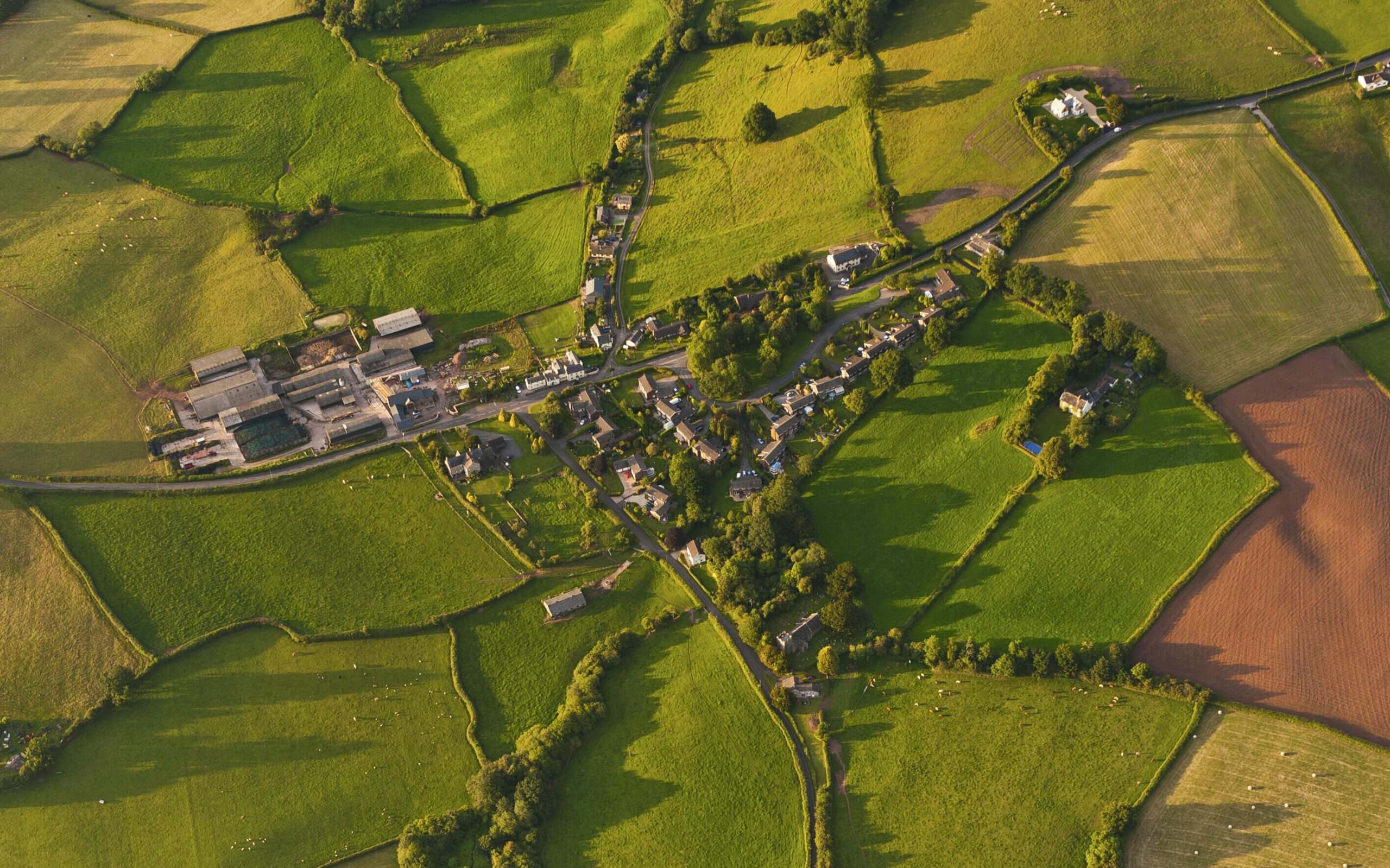
Autumn drilling is all but over, the clocks have gone back and Christmas songs are playing in the shops. It is the time of year to reflect on the year gone by and to speculate what might be in store for 2022.
2021
The past 12 months have seen a constant fight against the weather, Brexit disruptions, soaring fuel and fertiliser prices and continued uncertainty over what will replace the Basic Payment Scheme. As I write, the 2021 United Nations Climate Change Conference (COP26) is in session which could bring unimagined changes to the way in which we farm, with perhaps the greatest threats in the livestock sector. Tax rates, inflation rates and interest rates must surely rise soon to pay for the unprecedented costs of the pandemic.
On the back of such turbulence, surely many farmers will wish to leave the industry. The market should be awash with land and farms for sale with just a few choosy buyers taking their pick if the price is right.
Nothing could be further from the truth. There is no panic to leave the industry. There has been little land on the market, particularly across central England. If anything, land prices have risen again slightly and the average price for decent arable land might be approaching £10,000 per acre again.
The low supply of land for sale arises from the lack of any pressure from the banks. Farming has been a safe investment for the banking sector with low interest rates and significant asset values. Farmers have used the better years to ensure that borrowings are under control and many now have diversified income, making the farming income less critical. Given all the lifestyle, family and tax advantages of farming, why stop now?
We are also seeing significant money available for investment into farming, largely from development proceeds or from non-farming sources. In difficult times, farmland appears to be a safe investment despite the poor returns. As they say, “nobody is making it anymore”.
Notwithstanding the above, we have seen an enormous range in prices for farmland. Large, fully equipped farms have been in short supply and attract good interest where they are found. However, smaller blocks are very much dependent upon local demand. If the immediate neighbours do not have the funds then some land can become very difficult to sell at any price.
Initial pricing can also be key. A greedy guide price together with unnecessary clawback clauses can kill a sale before it starts, even for a larger serviced block. By the time the pricing is adjusted to a more realistic level, the property will be tainted. The market will assume that there is something wrong with the property.

2022
Frankly, unless interest rates rise, the supply of land will remain limited. We should begin to see more certainty with the new Environmental Land Management scheme and I suspect that much of the oil price spike will dissipate. There will continue to be strong demand from those with the funds and I suspect that the 2022 market will be very similar to 2021. For those looking to exit the industry, the prices and the tax regime will remain favourable. Meanwhile, for those with the funds to buy, there will continue to be good opportunities.
For further information or to discuss your land or farms, please contact David.
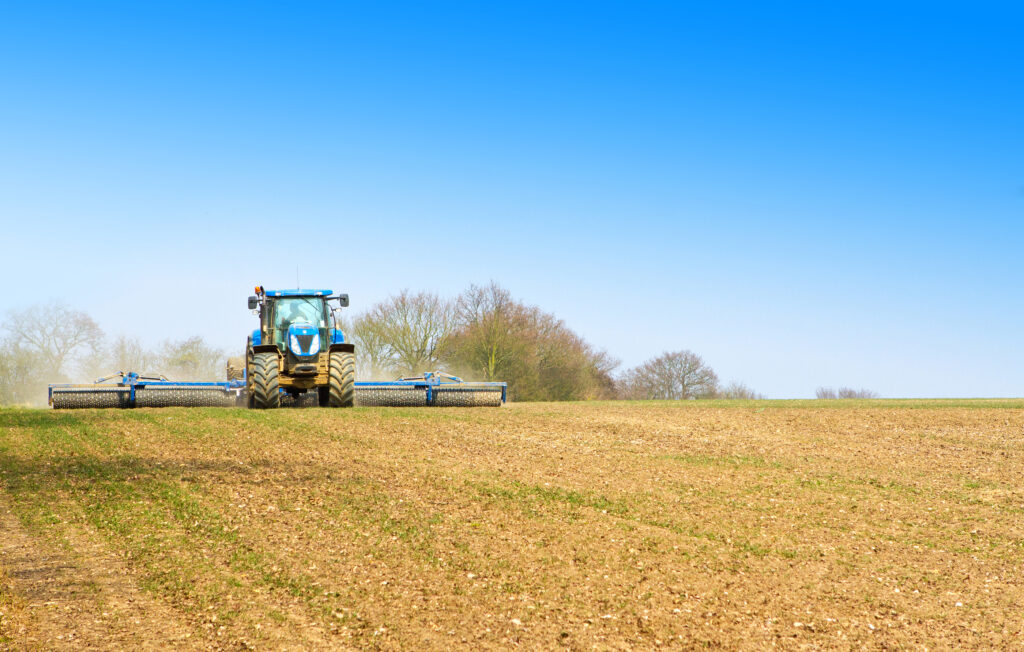
The Agricultural Transition Plan, and the gradual phasing out of direct payments, has seen the introduction of new domestic grant funding schemes. The application window for the Farming Investment Fund (FIF), introduced with the aim to improve productivity alongside ensuring environmental benefits, has just opened.
The FIF is split into two funds:
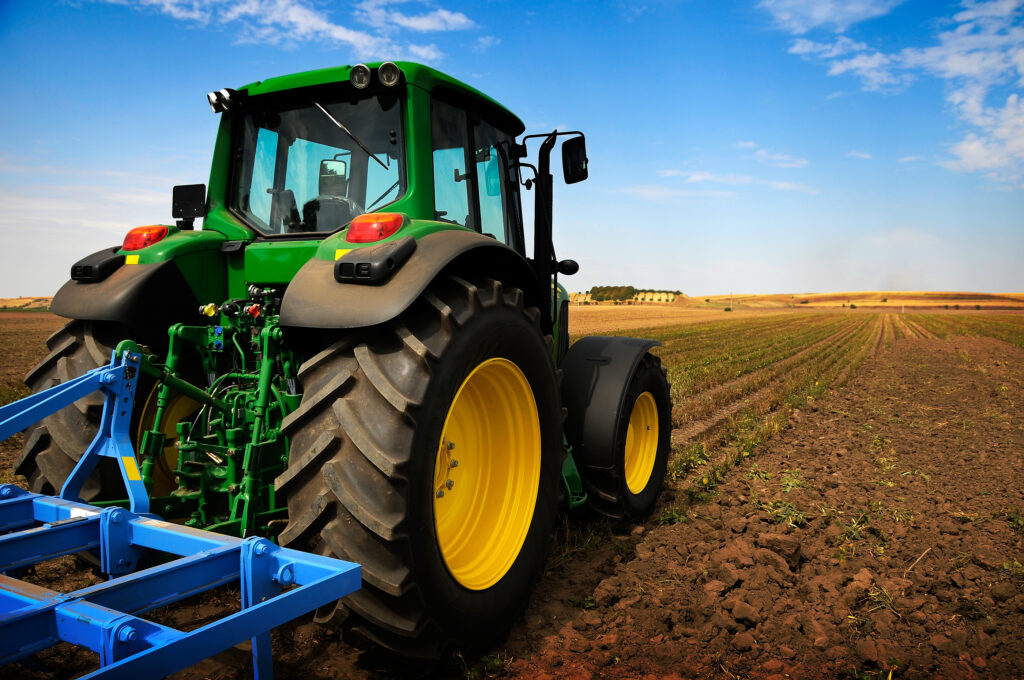
The Farming Equipment and Technology Fund (FETF)
The FETF provides grants between £2,000 and £25,000 to allow businesses to invest in equipment and technology that will help them develop more sustainable and productive agriculture, horticulture and forestry systems. Farmers, horticulturalists, forest owners and contractors can apply. The Round 1 application window is now open and closes at midday on 7th January 2022.
The grant provides a contribution towards the purchase of new equipment and technology, selected from a predefined list published by the Rural Payments Agency. This list is considerably larger than under previous schemes, with the increase in the maximum grant level to £25,000 increasing the range available – notably including higher value items, such as 6m direct drills. Each item has a detailed cost against it, which is the actual grant amount that will be received, regardless of how much was paid to acquire the item.
The full list of eligible items and costs can be found here.
The grant is paid in arrears, therefore applicants must be able to cover the full cost initially from private funds. Applicants cannot utilise money from other UK public funds, lease or hire purchase schemes. Applications cannot be made for items that public money has already been used for, e.g. through the Countryside Productivity Small Grant scheme (CPSG).

Interestingly, whilst the maximum value per grant is £25,000, an applicant can apply for a total of £50,000 over the scheme’s duration. This could be two rounds of applications, each for £25,000. Previous funding for other items received under the CPSG will not contribute to these totals.
Claiming the grant can only occur once the item has been paid for, delivered, installed and made operational. The deadline for submitting these final claims is midnight on 30th September 2022.
The Farming Transformation Fund (FTF)
The FTF is a larger grant to provide grants between £35,000 and £500,000 through three proposals:
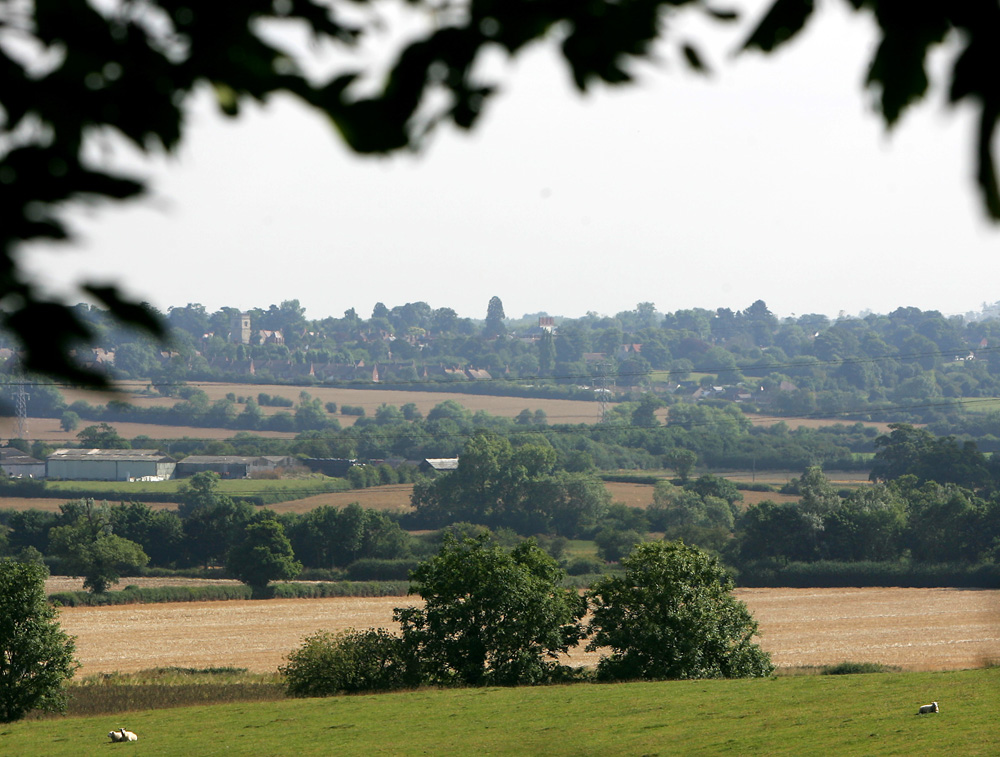
Currently information has only been provided for the Water Management Grant, with the window for the initial applications of interest now open until 12th January 2022. Successful applicants will be invited to make a full application before 30th June 2022.
Funding is again for predefined items, subdivided into:
Again, multiple claims over the project lifespan (up to three claims) are expected.
This grant follows the structure of previous similar grants in that the grant can cover up to 40% the total eligible costs of a project. The balance of the project costs must be paid for from private sources, such as savings but can include hire purchase or leased items (which need to be paid off before a claim is ultimately submitted). Interestingly, this also includes money from certain other grants such as Basic Payment Scheme or Countryside Stewardship. However, no public money can be used and no element of this grant can be used to carry out capital works under other agreements.
We await information on the other two areas within the FTF, to include when the application windows will open.
Finally, please note that all grants outlined above are competitive, with applications scored against one another and how they meet pre-defined criteria.
If you are interested in applying for either of the grants or would like more information, please contact a member of our Rural Team.

The Farming Rules for Water, which were introduced in 2018 in England, provide clear standards for the application of fertilisers and manures on agricultural land. Rule 1 (Regulation 4) of these Farming Rules requires the application of organic manure and manufactured fertiliser to be planned so that it does not exceed the needs of the soil and crop, nor give rise to a significant risk of agricultural diffuse pollution.
Where organic manures are spread as a means of disposal rather than as a fertiliser required by the crop, the Environment Agency has recently published a Regulatory Position Statement (RPS) for this coming autumn. The position statement applies to land managers and allows them to follow specific conditions so that they can apply organic manure on agricultural land that may exceed the needs of the soil or crop, although it is still important to note that there must be no risk of pollution.
The RPS details that in order to spread organic manure that exceeds the crop or soil requirement between now and 1st March 2022, a land manager must be able to prove that the following options are not feasible:
This will show that the only remaining option is to spread the organic manure. If a land manager can comply with the conditions of the RPS, and are able to spread organic manure, this must only be done on low leaching and run-off risk land. This is where:
Where land managers wish to use this RPS, it is critical they email the Environment Agency (enquiries@environment-agency.gov.uk) in advance to inform them of this. Included in the email must be the company name using the RPS and the contact details, the type of organic manure being spread and the field locations. The subject line for the email must be Spreading organic manures on agricultural land: RPS 252.
For more information or to find out how our Rural Property & Business department can help you, please contact 01234 352201 or email bedford@robinsonandhall.co.uk
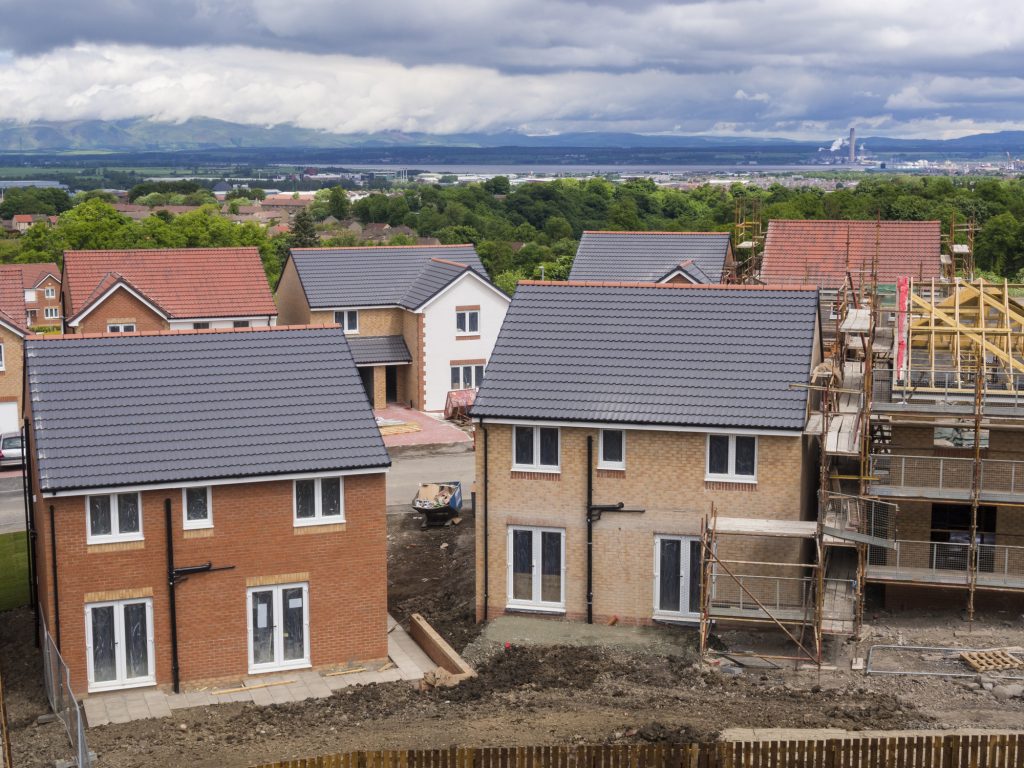
Over the last three years, we have seen a growing trend of landowners being approached by developers looking to develop new garden villages. These garden villages are often within the open countryside on land that we would not normally consider suitable for development as it is not adjoining any major settlement.
The garden village concept is for these communities to be self-servicing, with a local service centre, and to vary between 1,000 and 3,000 houses. The area of land required is significant at 200 to 600 acres per village and we have noticed a trend towards being close to a train station and/or good road connection.
The garden village concept therefore offers huge opportunities to landowners to gain the benefit of development proceeds, whilst also creating a development that they can be proud of with a focus on place making and designed with the community in mind.
The first few developments using this new concept have now received planning permission and the house builders, in particular the large PLCs, like the concept due to them being able to provide a significant housing number over the long term. The advantage to the local councils is that it provides the opportunity to locate housing away from further expansion on the edges of existing conurbations.
With the continued need for new housing sites and the Government preparing its Strategic Framework for the Oxford to Cambridge Arc, we are already involved in negotiations for a significant number of garden village sites and expect to see further proposals come forward through the planning system.
If you are a landowner and are approached about a new garden village development, please do consider it carefully and discuss it with us at an early stage. The development of such land may feel farfetched but it may now be far more likely than it once was.
Should you have any questions then please contact Andrew Jenkinson, Partner and Rural Chartered Surveyor, on 07967 964508 or email abrj@robinsonandhall.co.uk
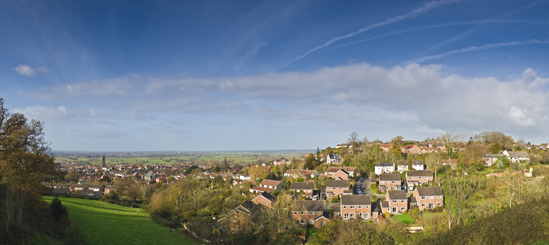
The Government has launched a consultation on the Oxford to Cambridge Arc which is aimed to inform their approach and vision to the future of the Arc. The consultation will run for 12 weeks from 20th July to 12th October 2021.
The Spatial Framework, which will be produced over the next two years, will set out the master vision for the Arc and will have the same weight in planning terms as the National Planning Policy Framework. This means that all of the Local Planning Authorities within the Arc will have to comply with this document when drawing up their own individual local planning policy.
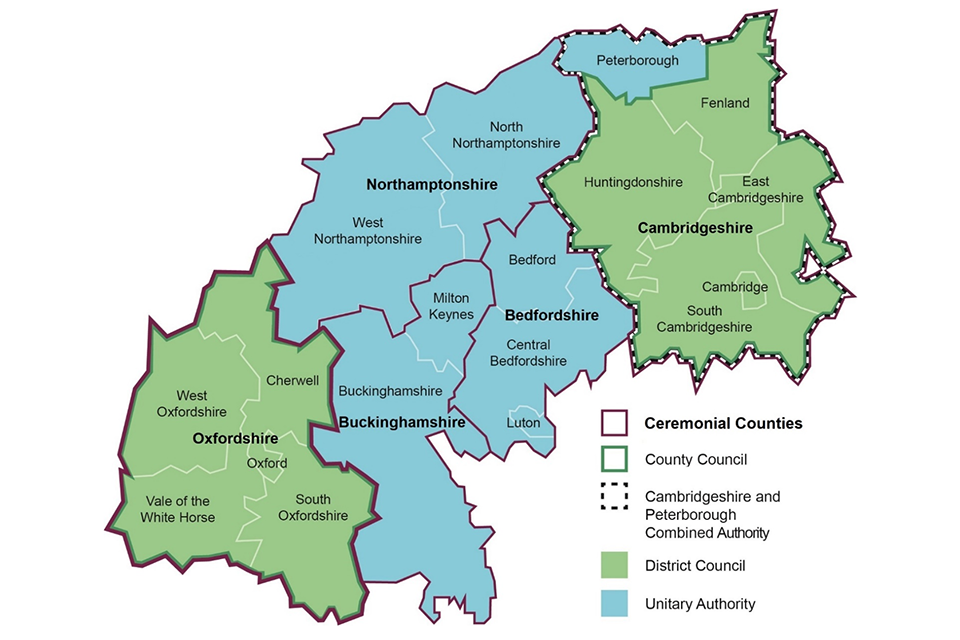
The consultation covers the counties of Oxfordshire, Buckinghamshire, Northamptonshire, Bedfordshire and Cambridgeshire and is the first of three consultations. Whilst the final Spatial Framework will not make site allocations, it will recommend areas for growth and will guide the Local Plans and investment decisions through to 2050.
The Government believes that the Spatial Framework will allow them to plan for growth in a way that:
environment and beautiful places; and
In addition, the Government has announced a new expert panel to advise on sustainable economic and housing growth in the Arc. The panel’s primary area of focus is between Bedford and Cambridge where the Government is examining opportunities to bring forward well designed, inclusive and sustainable places.
It is important to make your voice heard in the preparation of the Spatial Framework, as it will guide many planning decisions over the next 20 years, even with changes in central and local Government. Please click here to have your say on the Oxford to Cambridge Arc. The link will take you to the online platform with set consultation questions.
If you require more information on the Oxford to Cambridge Arc, please visit the Government website here. If you would like to speak to one of our Rural Property & Business experts about the Oxford to Cambridge Arc and potential impacts it could have on your land, please call 01234 352201 and ask to speak to Andrew Jenkinson or Polly Sewell.

The Forest of Marston Vale Trust has secured unprecedented levels of funding from the Department for Environment Food & Rural Affairs (Defra) to accelerate tree planting activity within the Marston Vale area of Bedfordshire over the next four years. Under this new “Trees for Climate” scheme, up to £8 million is available to support new tree planting projects up until April 2025. It presents an excellent opportunity for landowners looking at options for their land going forwards, and a chance to explore how trees can be part of their plans.
Covering 61 square miles between Bedford and Milton Keynes, as shown in the plan below, the Forest of Marston Vale is one of 12 Community Forests established during the early 1990s. Since its inception over 2 million trees have been planted within the Forest area and, with the Government’s commitment to planting 30,000 hectares of woodland per year across the UK by 2025, this additional funding will help enable more planting to be completed.
The Defra-backed Trees for Climate Scheme will provide flexible funding packages to landowners for creating new woodlands, including payments for up to 15 years. Assistance will be given to design planting proposals and also to plant and establish the new woodland over the first 5 years, if required. Locally, the Trees for Climate scheme is unique to the Forest of Marston Vale, and offers more flexible and potentially greater levels of funding than nationwide schemes recently launched by the Forestry Commission.
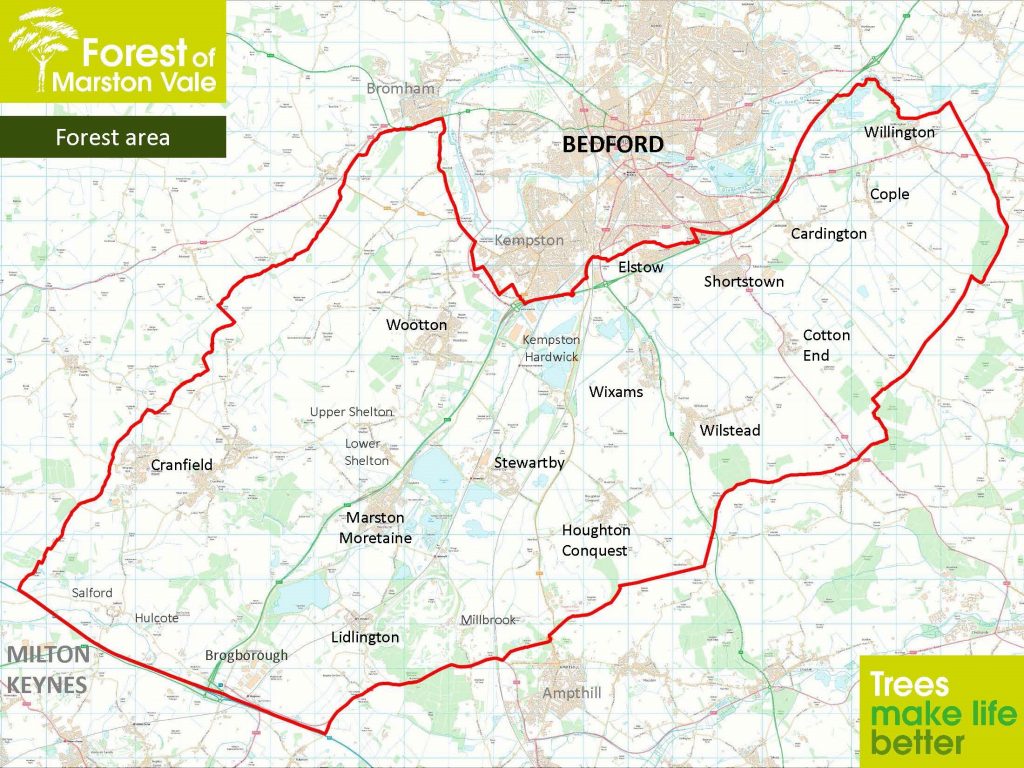
If you have land within the Forest of Marston Vale area and would like more information on the Trees for Climate Scheme, please contact Katie Cross on 01234 362935 or email krc@robinsonandhall.co.uk